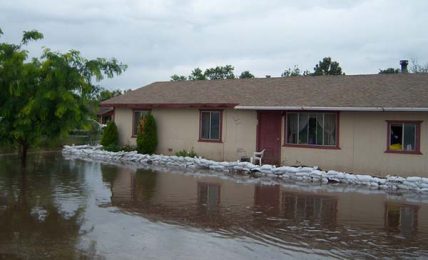Disclaimer. I am not a licensed health
practitioner. This is just another post on an item you might wish to
have available if needed so that a physician can treat you and your
family as best as possible. No medication, including those available
over the counter, should be taken without consulting a physician.
Information shared here is for educational and entertainment purposes
only. It is not medical advice nor a substitute for licensed medical
care. A qualified, licensed physician or other medical provider should
be consulted before beginning any herbal or conventional treatment.
A previous post covered the most common mosquito-borne disease that has
historically affected us in the US, yellow fever. But it doesn’t get
much coverage in the press and it’s not currently a threat. So people
are far more concerned with Zika and West Nile.
Zika. Most people bitten by mosquitoes carrying the Zika virus
have no symptoms or only a mild form of the illness. However, others
have more serious cases and in pregnant women there is the threat of
microcephaly developing in the unborn child. Local transmissions of
Zika virus occurred in Florida and Texas in 2016 and 2017. The most
common symptoms are fever, rash, joint pain, conjunctivitis, headache,
and muscle pain, which can last several days to a week, and which are
very similar to dengue and Chikungunya. While most people do not become
very ill, there are a small number of fatal cases. The treatment is
rest and fluids to prevent dehydration. The CDC advises Tylenol for
pain and fever and warns against taking aspirin. Take the usual
precautions when dealing with any bodily fluids.
Chikungunya. Most cases occur in Africa and Asia, with almost
all cases among Americans originating in those visiting foreign
countries. While the CDC distribution map suggests that Chikungunya is
found in the US, there was only one case in the American Caribbean
islands in 2013. There was one locally acquired case in Texas in 2015.
There were twelve locally acquired cases in Florida in 2014. The rest
of the cases in the US were from travelers. Most people who become
infected will develop symptoms three to seven days after being bitten.
The symptoms are very similar to dengue and Zika., with the most common
symptoms being fever and joint pain. Other symptoms include headache,
muscle swelling, and a rash. Most patients feel better within seven
days, but for some, the joint pain persists for months. Chikungunya is
not often fatal, but the symptoms can be disabling and severe. There is
no vaccine to prevent the disease nor medicine to treat it. Those most
at risk for developing a severe case of the disease are newborns, those
over 65, and those with high blood pressure, diabetes, or heart
disease. The CDC advises Tylenol for pain and fever and warns against
using aspirin.
Dengue. This tropical disease very rarely occurs in the US. Local outbreaks have occurred in Hawaii, Texas, and Florida; the Aedes aegypti mosquitoes
responsible for spreading dengue live below 35 degrees latitude and
3000 feet altitude. Dengue is found in over 100 countries, and 40% of
the world’s population lives in areas at high risk for dengue. Four to
seven days after a bite, about
25% of individuals infected with dengue will become sick, and the
disease can range from mild to severe. About 5% of individuals will
develop severe dengue. Those most at risk for severe dengue are people
who have had dengue in the past, infants, and pregnant women. Symptoms
of dengue include a sudden high fever plus any of the following:
nausea, vomiting, rash, aches and pains, especially behind the eye, and
muscle and joint pain. There is no vaccine and no medications beyond
supportive care. Warning signs of severe dengue usually begin 24-48
hours after the fever has subsided and include belly pain and
tenderness, vomiting (at least three times in 24 hours), bleeding from
the nose or gums, vomiting blood or blood in the stool, and feeling
tired, restless or irritable. Severe dengue is a medical emergency.
West Nile. This virus is transmitted to horses, people, and
birds. Unlike many of the other mosquito-borne diseases, WNV actually
occurs in most of the US. It usually causes no symptoms in 80% of
people bitten; however, 20% will develop a fever with other symptoms of
body aches, rash, nausea, vomiting, joint pain, headache, and/or
diarrhea. Severe illness with WNV can occur at any age, but the elderly
are most at risk. There have been 42,000+ cases of WNV in the US in
the past 20 years. Of these, 19,000 experienced neurological symptoms.
Just under ten percent of these people died. West Nile virus is most
commonly spread through mosquito bites, though it may also occur through
blood transfusion or from mother to baby during pregnancy or through
breast milk. In about 1 in 150 patients, WNV can become
life-threatening within a few hours and require hospitalization. The
development of encephalitis or meningitis includes the following
symptoms: high fever, headache, neck stiffness, stupor, disorientation,
tremors, coma, vision loss, numbness,
and paralysis. About 10% of those who develop encephalitis or
meningitis symptoms die. Some effects to the central nervous system may
be permanent.
Japanese encephalitis. This virus is transmitted by mosquito
bites. However, the virus does not replicate in sufficient numbers for
person to mosquito to person infection to occur. For this reason and
because this disease does not occur in the US it will not be addressed
here. There is a vaccination for it for people traveling to Asia.
Links to related posts:
Book Review: Herbal Antivirals
Catnip (mosquito repellent)
Permethrin (mosquito repellent and insecticide)
For further reading:
https://www.cdc.gov/niosh/topics/outdoor/mosquito-borne/default.html
https://www.health.state.mn.us/diseases/mosquitoborne/diseases.html
https://deteroutdoor.com/blog/5-dangerous-diseases-transmitted-mosquitoes/
https://portal.ct.gov/Mosquito/Diseases/Mosquito-Transmitted-Diseases
http://npic.orst.edu/pest/mosquito/index.html
http://npic.orst.edu/faq/mosqtrvl.html
https://www.cdc.gov/westnile/prevention/index.html?CDC_AA_refVal=https%3A%2F%2Fwww.cdc.gov%2Fwestnile%2Ffaq%2Frepellent.html
https://www.cdc.gov/features/StopMosquitoes/
https://www.cdc.gov/chikungunya/pdfs/fs_mosquito_bite_prevention_us.pdf
https://www.doomandbloom.net/dengue-fever-in-the-u-s/


